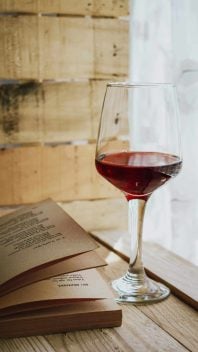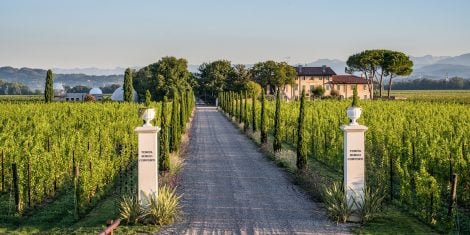As we await the decree promised by Minister Francesco Lollobrigida, Italian wineries are contemplating the opportunities presented by de-alcoholised and low-alcohol wines (the no-low segment), which can now finally be produced in Italy. The MASAF's decision to present a draft to trade associations has elevated the debate on this category of wines, permitted in Europe under Regulation (EU) 2021/2117. A significant part of the large-scale retail sector (GDO) recently shared its views in Tre Bicchieri magazine on the potential for businesses and distributors to tap into this trend. Before that, major wine organisations like the Unione Italiana Vini had also weighed in. At the recent SIMEI fair, this was a hot topic, with queues of operators in front of de-alcoholisation machinery underscoring the interest. Similarly, the recent WBWE bulk wine fair in Amsterdam showcased the so-called no-lo products prominently.

The perspective of wineries
While discussions among trade associations remain ongoing (see Assodistil’s stance), the path forward appears clear. Many wineries, previously hesitant, may opt to enter this new realm starting in 2025. For some, this move represents a betrayal of Italy's historic winemaking traditions and territorial culture. For others, it offers a lifeline to address issues like overproduction and cater to modern consumers. Interviews conducted by Tre Bicchieri with wineries and consortia reveal a mix of scepticism and hope for alternatives to navigate market fluctuations. Some even look beyond the decree’s current provisions, envisioning future potential in de-alcoholising IGP wines, currently not permitted.
Addressing stock surpluses
Producing de-alcoholised wines could be a particular boon for regions facing surplus wine stocks. Certain cooperatives that sell much of their wine in bulk view this solution favourably. Carmine Coletta, president of Cantina Solopaca—a 1,000-hectare winery in Benevento with 600 grape-growing members and an annual output of over 100,000 hectolitres—states clearly:"If producing de-alcoholised wines helps absorb excess production and ensures income for our members, we must consider it. We can't afford to be dogmatic. However, I believe Italy is not yet ready as a market for these wines, especially given the long-standing decline in wine consumption domestically." Cantina Solopaca, which expects a decent sales balance for 2024 after two challenging years, had explored investing in de-alcoholisation equipment: "It’s not simple—it requires significant investments of hundreds of thousands of euros. It would be appropriate," Coletta proposes, "for the State to provide high-percentage grants to build these facilities through a dedicated tender open to all wineries. That seems like the right way to help modernise the wine sector."
Pooling resources to offset costs
This approach resonates with Colomba Bianca, a large Sicilian cooperative that advocates for joint efforts among producers to secure funding for de-alcoholisation facilities. Following a weak 2024 harvest and consecutive declines in 2023, the cooperative currently has no surplus wine for de-alcoholisation. "Since October, there’s been no wine left to spare," says president Leonardo Taschetta, adding:
"However, being able to allocate surpluses for de-alcoholisation would be an opportunity, particularly for Islamic countries. Italy made the right call to allow production, as leaving the market to international competitors would have been a mistake. Still, I don’t think consumers of de-alcoholised wines will replace traditional wine drinkers."
Taschetta doesn’t rule out extending the practice to denominated wines: "Placing too many restrictions isn’t helpful. Other countries are much more liberal, and if we remain purists, we risk losing the battle. Low-alcohol wines are preferable to no-alcohol wines. A 7-degree sparkling wine could attract beer enthusiasts. I’ve sampled similar products globally, and they seem to work. However, we need to start with good-quality base wines. De-alcoholisation shouldn’t be a way to dispose of poor-quality wine."

Sardinian scepticism
Sandro Murgia, president of Sardinia’s largest cooperative, Cantine di Dolianova, is highly sceptical. The cooperative, which anticipates a +10% increase in 2024 sales, has not yet considered producing de-alcoholised wines. At SIMEI, Murgia tasted several de-alcoholised wines but noted: "I wouldn’t call them wines—while pleasant on the nose, they lack something on the palate. However, we mustn’t underestimate this segment. Time will tell." Murgia links de-alcoholised products to sweetened beverages popular among younger consumers. He emphasises the need for better communication and education on traditional wine, grounded in Italy’s millennia-old history.
Experience from Cantine Sgarzi
Despite scepticism, the forthcoming decree could provide a boost to existing producers of de-alcoholised wines, such as Cantine Sgarzi in Emilia-Romagna. For over 15 years, they have produced no-low alcohol beverages, with de-alcoholised wine as a key ingredient for the past five. "Finally, we see a regulatory framework emerging for this segment, which could become a strategic asset. We’re ready to invest because we believe there’s fertile ground even in Italy," says Francesca Sgarzi, a member of the next generation of this family business.
In 2024, Cantine Sgarzi produced around 500,000 bottles of non-alcoholic products (under 0.5% ABV), and demand is rising. The MASAF decree would reduce uncertainty, lower costs, and enhance environmental sustainability. Currently, the winery must transport bulk wine for de-alcoholisation in Spain, France, or Germany, where it is legal, before returning the product to Italy—a costly and inefficient process.

Prosecco DOC's pragmatic approach
The Prosecco DOC Consortium views de-alcoholisation as a potential outlet for surplus glera grapes outside the denomination. President Giancarlo Guidolin explains: "It would have been absurd to let other countries seize this opportunity while excluding Italy. For us, de-alcoholised wines could help address surplus production while not competing directly with traditional Prosecco." While a de-alcoholised Prosecco DOC is not under consideration, the Consortium is open to discussing such possibilities in the future.

Chianti DOCG looks ahead
Chianti DOCG president Giovanni Busi maintains an open stance: "Right now, I don’t see a no-low alcohol Chianti, but I can’t rule it out for 10 or 20 years down the line. We mustn’t enshrine rules that forever forbid such wines." Busi highlights the expanding global wine markets, noting that many no-low alcohol wines exported to the U.S. from Italy are currently produced in France. He also identifies potential in Muslim-majority countries and Japan, where canned wine has gained immense popularity:
"The world has space for everyone. Italian appellations must retain their specificity while adapting to changing trends."


 Why Arillo in Terrabianca's organic approach is paying off
Why Arillo in Terrabianca's organic approach is paying off What do sommeliers drink at Christmas?
What do sommeliers drink at Christmas? The alpine hotel where you can enjoy outstanding mountain cuisine
The alpine hotel where you can enjoy outstanding mountain cuisine Io Saturnalia! How to celebrate the festive season like an Ancient Roman
Io Saturnalia! How to celebrate the festive season like an Ancient Roman





